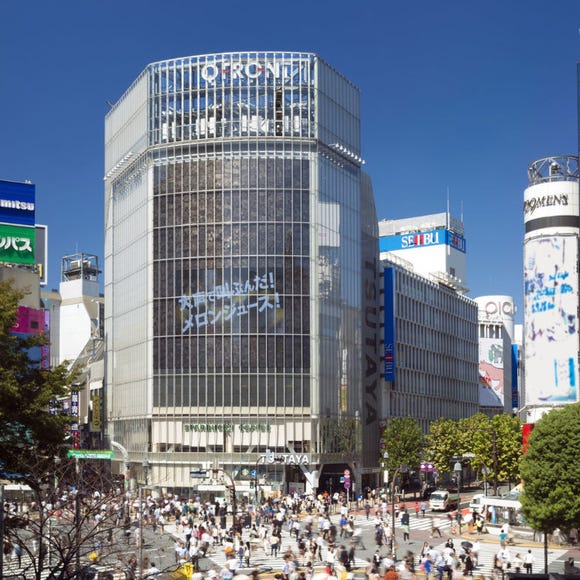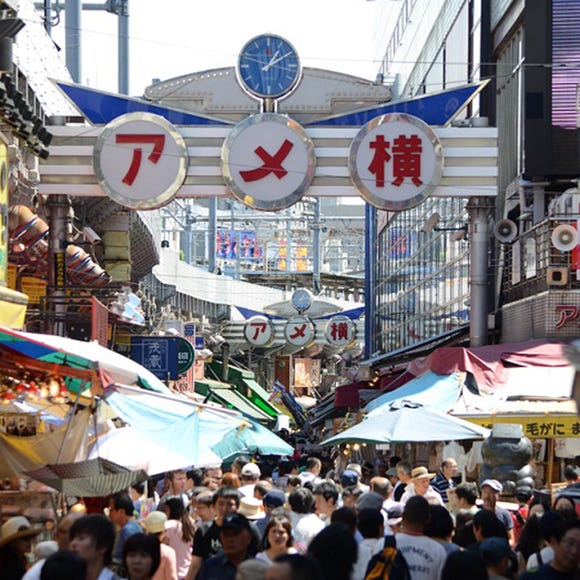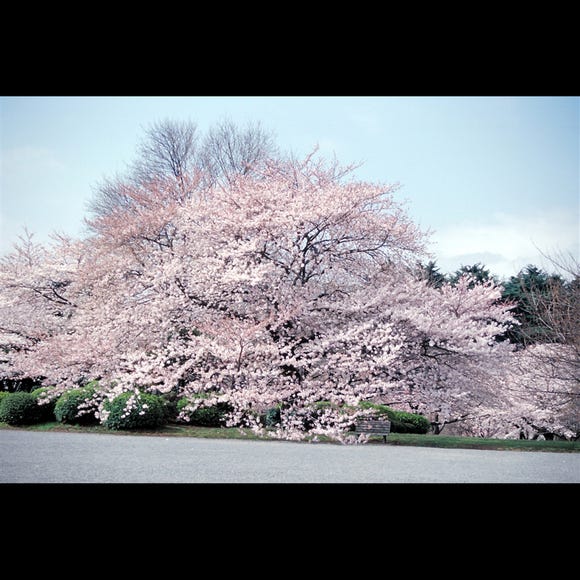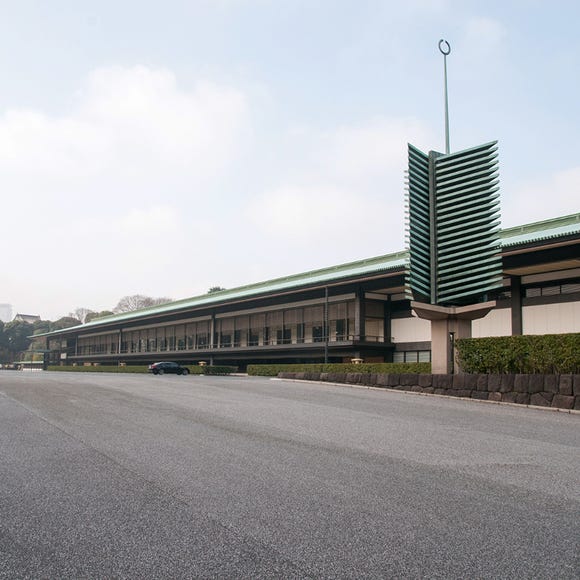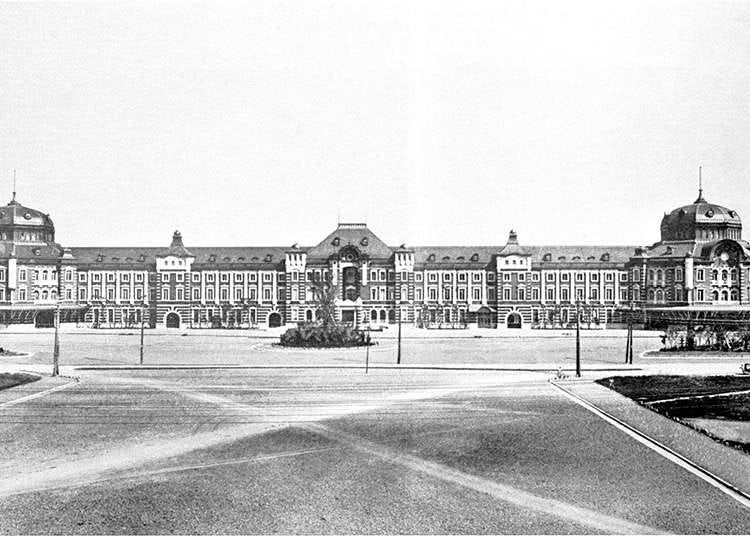
In 2012, Tokyo Station's original magnificent figure was revived after the completion of conservation and restoration works. Let's take a look at the history of the station building that remains the symbol of the capital to this very day.
Photo: Commemorative photo album, December 1914
The Opening of Tokyo Station
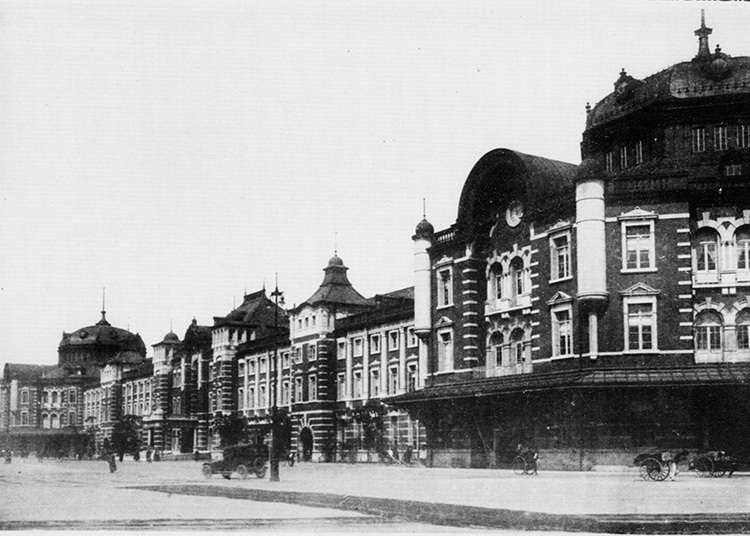
The construction work to build Tokyo's gateway was started in 1908. It took a total of six years until the 3-story tall and 335 meter long steel framed brick station building was finally completed in 1914. Back then, the front entrance of the stations were used exclusively by the Imperial family while the south dome served as the entrance to the platforms and the north dome as the exit. Additionally, a vast square was built right in front of the busy station. A total of over 900,000 red bricks were used for the exterior decoration alone!
Photo: The Chidoya Public Library
The Opening of the hotel
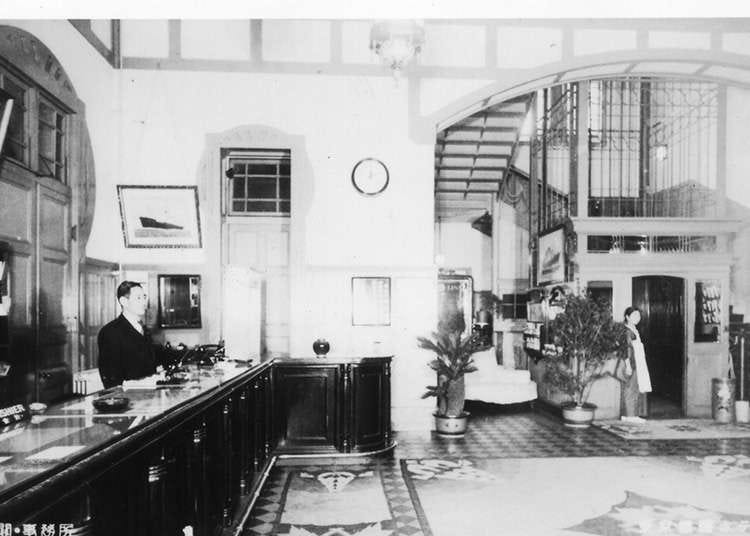
In 1915, just one year after the opening of Tokyo Station, the Tokyo Station Hotel was opened in the Tokyo Station Marunouchi Building. Ever since then, the European-style hotel that features 56 guest rooms and a banquet hall has been fully booked, impressing guests with its elegant architecture and state-of-the-art equipment and furniture. The hotel was temporarily closed between 2006 and 2012 due to conservation and restoration works and reopened with magnificent, renovated facilities. This photo shows the hotel front at the time between 1934 and 1945.
-

-
Address
Chiyoda-ku Marunouchi 1-9-1, Tokyo, 100-0005
View Map -
Nearest Station
Tokyo Station (Tokaido Shinkansen Line / Hokkaido Shinkansen Line / Tohoku Shinkansen Line / Akita Shinkansen Line / Yamagata Shinkansen Line / Joetsu Shinkansen Line / Hokuriku Shinkansen Line / JR Tokaido Main Line / JR Yokosuka Line / JR Sobu Main Line / JR Sobu Main Line (Rapid) / JR Keihin-Tohoku Line / JR Yamanote Line / JR Chuo Main Line / JR Keiyo Line / JR Ueno Tokyo Line / Tokyo Metro Marunouchi Line)
1 minute on foot
Vacancy search, reservation
-
from 73,876JPY 1room, 2adults
Check with our partner site as the latest rates, rate details, and guest room requirements may vary.
-
Address
Chiyoda-ku Marunouchi 1-9-1, Tokyo, 100-0005
The Pioneer of Japanese Architecture
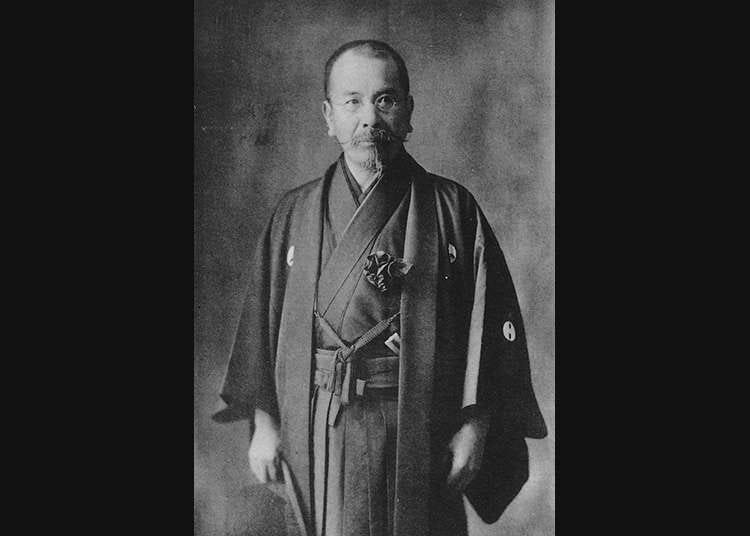
The architect behind Tokyo Station's design is Kingo Tatsuno. He brought his experience of studying in England back to his homeland and became the pioneer of Western architecture in Japan. He created a great number of buildings that stood for the country's power at the time, such as the Tokyo Head Office of the Bank of Japan in Nihonbashi. It took him eight years in total to finish the design of the entire 3-story station building, combining all platforms, the Central Post Office, as well as the front entrance for the Imperial family.
Photo: National Diet Library
Kingo Tatsuno's Architecture
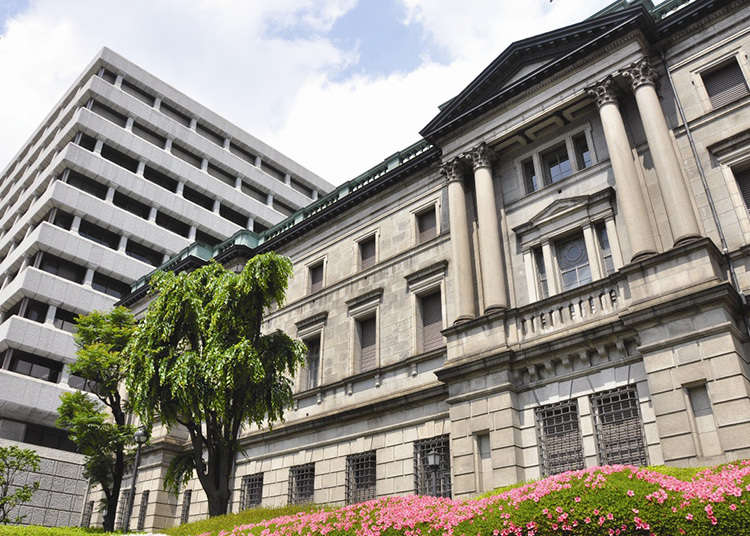
Before he designed Tokyo Station, Kingo tatsuno designed the Tokyo Head Office of the Bank of Japan. This was the country's central bank where Japanese banknotes were issued. Its architectural model was the National Bank of Belgium and the building was completed in 1896, a modern Western-style piece of architecture representative of the Meiji period (1868 - 1912). Even today, it is registered as an important cultural property.
Photo: Bank of Japan
-
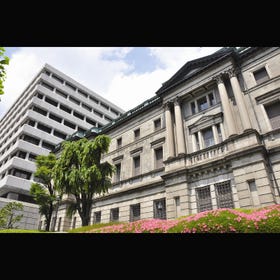
-
Address
2-1-1, Nihonbashihongokucho, Chuo-ku, Tokyo, 103-0021
View Map -
Nearest Station
Mitsukoshimae Station (Tokyo Metro Ginza Line / Tokyo Metro Hanzomon Line)
1 minute on foot
- Phone Number 03-3279-1111
-
Address
2-1-1, Nihonbashihongokucho, Chuo-ku, Tokyo, 103-0021
The Station's Roof: Victim of the War
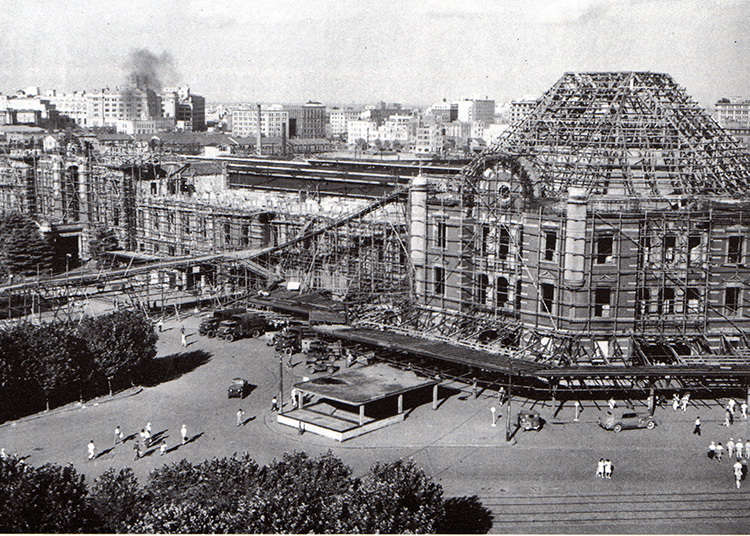
In the course of the Second World War, the symbolic dome roofs, the outer walls and the entire third floor were badly damaged. Due to the poor financial situation after the war, the reconstruction of the original station building was not sanctioned. In an emergency restoration project, octagonal roofs were used to replace the inconic dome roofs for the remaining two stories of the station building.
Photo: National Diet Library
Restoring the Magnificient Silhouette
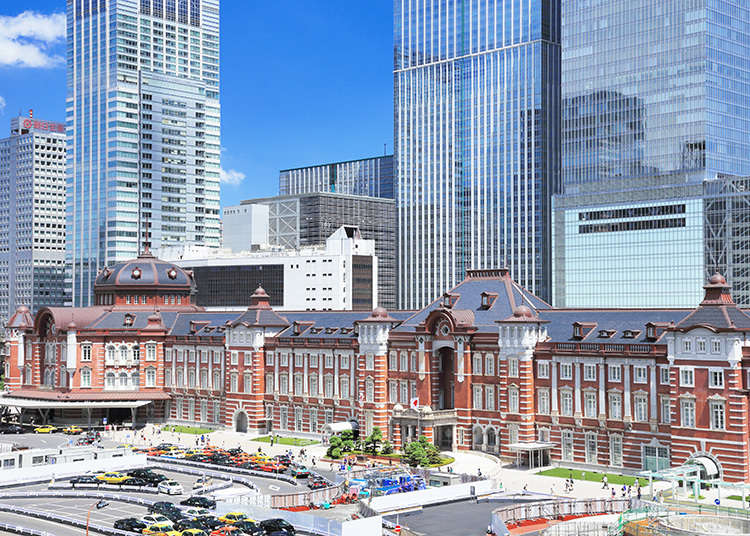
After the station building was registered as an important cultural property in 2003, conservation and restoration works of the Tokyo Station Marunouchi Building were commenced in 2007. The original three-story building was restored by reusing and preserving the bricks, inner steel frames, and outer walls of the first and second floors without demolishing the building entirely.
The Revival of the South and North Domes
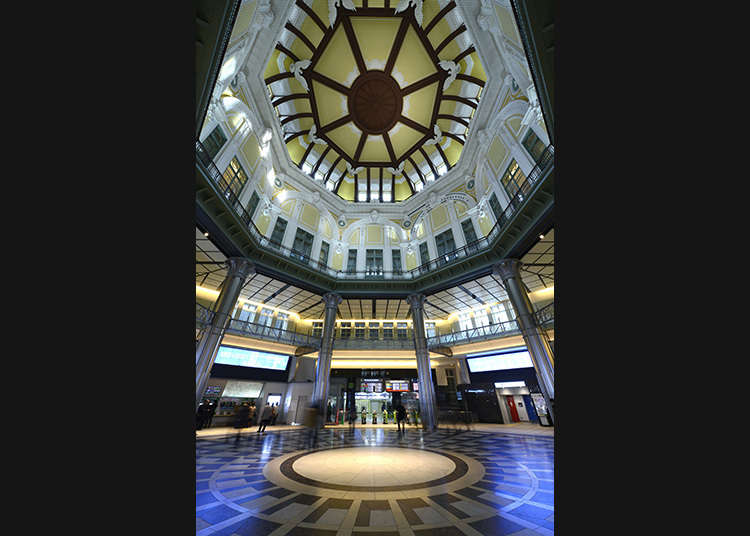
Both the north and south domes which had been destroyed during the war were restored as well. Only one blueprint of the domes' beautiful interior was left, however, and all the photos of it in black and white - nonetheless, the relief has been restored by analyzing these very photos. Some reliefs of the south dome's southeast wall on the third floor survived the war relatively unscathed and can still be admired as the originals they are. They were merely reinforced.
-
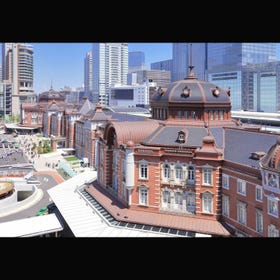
-
Address
1, Marunouchi, Chiyoda-ku, Tokyo, 100-0005
View Map -
Nearest Station
Tokyo Station (Tokaido Shinkansen Line / Hokkaido Shinkansen Line / Tohoku Shinkansen Line / Akita Shinkansen Line / Yamagata Shinkansen Line / Joetsu Shinkansen Line / Hokuriku Shinkansen Line / JR Tokaido Main Line / JR Yokosuka Line / JR Sobu Main Line / JR Sobu Main Line (Rapid) / JR Keihin-Tohoku Line / JR Yamanote Line / JR Chuo Main Line / JR Keiyo Line / JR Ueno Tokyo Line / Tokyo Metro Marunouchi Line)
-
Address
1, Marunouchi, Chiyoda-ku, Tokyo, 100-0005
Marunouchi: a Business District

In the 16th century, the current Marunouchi area was a part of the premises of Edo Castle, today's Imperial Palace, where the people working in the castle built their residential houses. 100 years ago, the area had first been used for barracks and, once those were torn down, as an open field. With the opening of the Tokyo Station in 1914, Marunouchi really started to be developed and the iconic Marunouchi Building was completed in 1923. Both the shopping center on the first two floors and the offices above were a revolutionary milestone in the history of Japanese architecture and heavily influenced many office buildings that followed.
Photo: National Diet Library
-
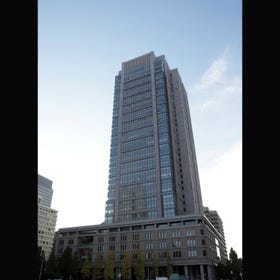
-
Address
2-4-1, Marunouchi, Chiyoda-ku, Tokyo, 100-6390
View Map -
Nearest Station
Tokyo Station (Tokaido Shinkansen Line / Hokkaido Shinkansen Line / Tohoku Shinkansen Line / Akita Shinkansen Line / Yamagata Shinkansen Line / Joetsu Shinkansen Line / Hokuriku Shinkansen Line / JR Tokaido Main Line / JR Yokosuka Line / JR Sobu Main Line / JR Sobu Main Line (Rapid) / JR Keihin-Tohoku Line / JR Yamanote Line / JR Chuo Main Line / JR Keiyo Line / JR Ueno Tokyo Line / Tokyo Metro Marunouchi Line)
1 minute on foot
- Phone Number 03-5218-5100
-
Address
2-4-1, Marunouchi, Chiyoda-ku, Tokyo, 100-6390
The First Office Building in Marunouchi
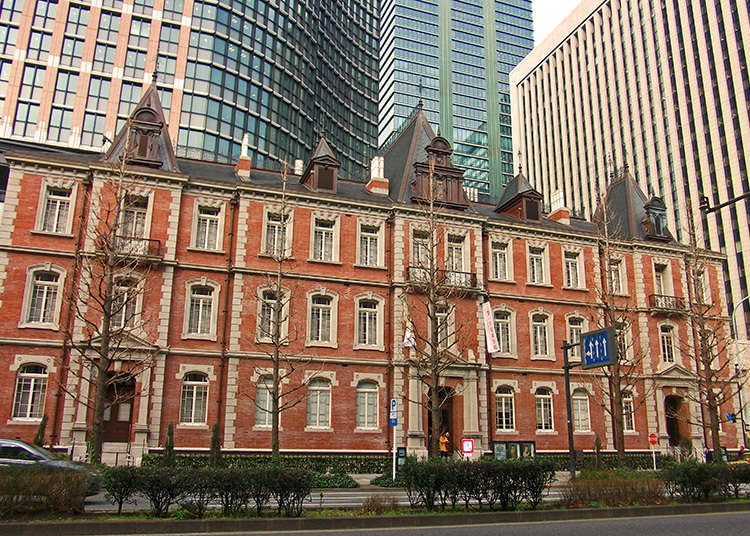
The designer of Tokyo Station, Kingo Tatsuno, studied under the English architect Josiah Codner. Mitsubishi Ichigokan, the first brick office building in Marunouchi, was designed by this Englishman and completed in 1894. Although it was demolished in 1968, it was rebuilt precisely to its original form in 2009, and opened to the public as Mitsubishi Ichigokan Museum in 2010.
-
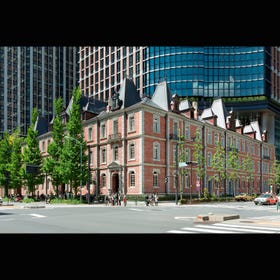
-
Address
2-6-2, Marunouchi, Chiyoda-ku, Tokyo, 100-0005
View Map -
Nearest Station
Tokyo Station (Tokaido Shinkansen Line / Hokkaido Shinkansen Line / Tohoku Shinkansen Line / Akita Shinkansen Line / Yamagata Shinkansen Line / Joetsu Shinkansen Line / Hokuriku Shinkansen Line / JR Tokaido Main Line / JR Yokosuka Line / JR Sobu Main Line / JR Sobu Main Line (Rapid) / JR Keihin-Tohoku Line / JR Yamanote Line / JR Chuo Main Line / JR Keiyo Line / JR Ueno Tokyo Line / Tokyo Metro Marunouchi Line)
5 minutes on foot
- Phone Number 03-5777-8600
-
Address
2-6-2, Marunouchi, Chiyoda-ku, Tokyo, 100-0005
Japan's First Central Central Post Office
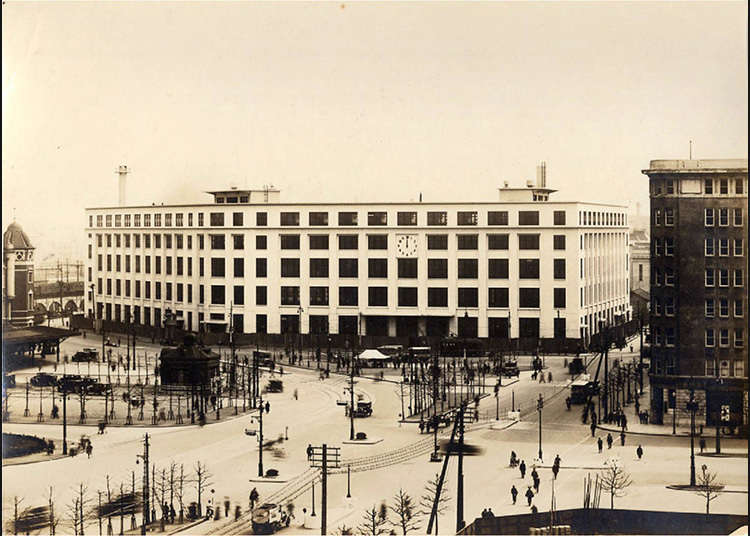
The Tokyo Central Post Office is located directly outside of Tokyo Station's south exit. The original building was completed in 1931 and during the Taisho and Showa period, mail was transported by cart between the post office and Tokyo Station via an underground passage. Today, a part of the original office building is still preserved and now used as the lower floors of JP Tower KITTE. The former head officer's room was also restored and is now open to the public as a resting space.
-
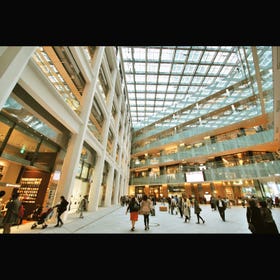
-
Address
Marunouchi 2-7-2, Chiyoda-ku, Tokyo, 100-7090
View Map -
Nearest Station
Tokyo Station (Tokaido Shinkansen Line / Hokkaido Shinkansen Line / Tohoku Shinkansen Line / Akita Shinkansen Line / Yamagata Shinkansen Line / Joetsu Shinkansen Line / Hokuriku Shinkansen Line / JR Tokaido Main Line / JR Yokosuka Line / JR Sobu Main Line / JR Sobu Main Line (Rapid) / JR Keihin-Tohoku Line / JR Yamanote Line / JR Chuo Main Line / JR Keiyo Line / JR Ueno Tokyo Line / Tokyo Metro Marunouchi Line)
- Phone Number 03-3216-2811
-
Address
Marunouchi 2-7-2, Chiyoda-ku, Tokyo, 100-7090
- Area
- Category
*Prices and options mentioned are subject to change.
*Unless stated otherwise, all prices include tax.
Limited time offer: 10% discount coupons available now!
Recommended places for you
-

The CASIO S100: How CASIO's Masterpiece Calculator Redefines Business Elegance With Japan-Made Reliability
-

The Complete Guide to the Kintetsu Rail Pass
-

Opened in Spring 2024! What to do at Tokyu Plaza Harajuku Harakado
-

A Complete Guide to the JR West Kansai Area Pass
-

Step Into the Story: Inside Immersive Fort Tokyo
-

Everything You Need To Know About the Kyoto-Osaka Sightseeing Pass
-
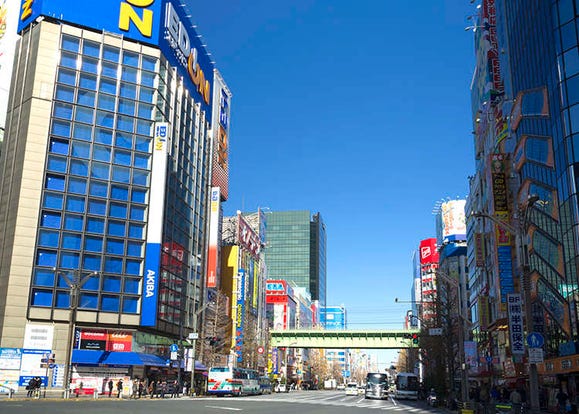
Akihabara now and then
-
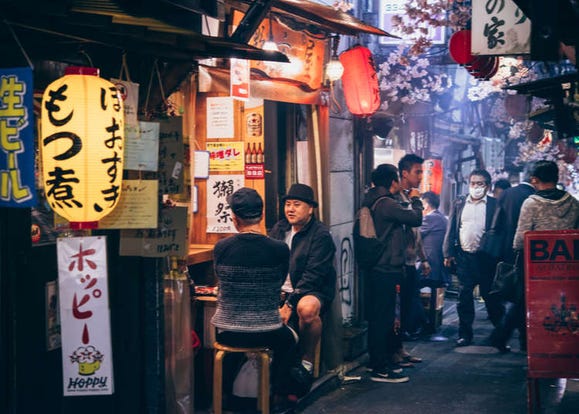
Secrets to Saving Money in 'Expensive' Japan: Tips From Real Travelers
-
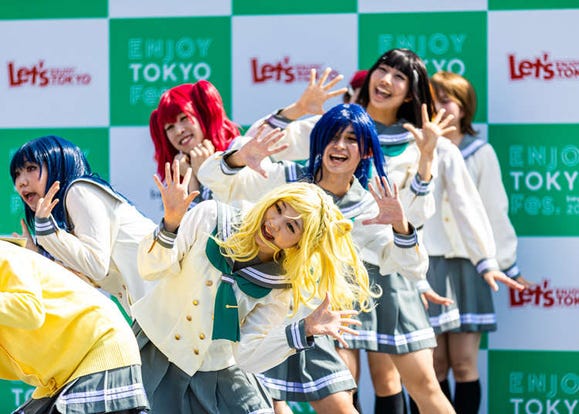
Enjoy Tokyo Festival: Beyond 2020 Proves a Hit in Ikebukuro
-
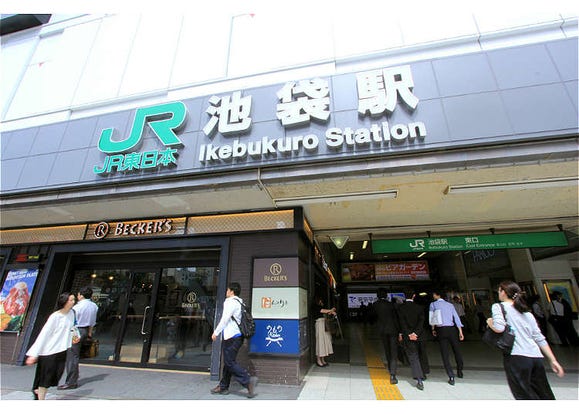
Essential Tokyo: The Complete Guide to Ikebukuro Station
-
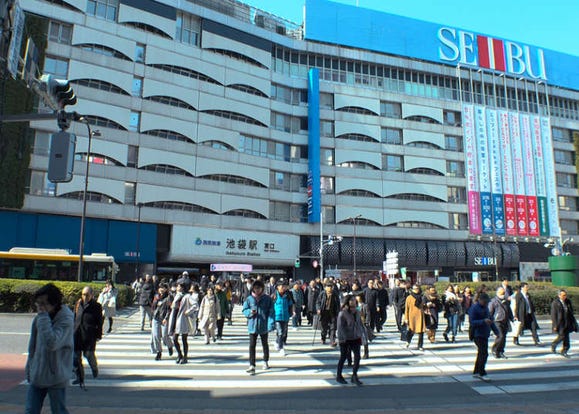
Ikebukuro Station Area Guide: Top 15 Spots When You Escape the Station's Maze!
-
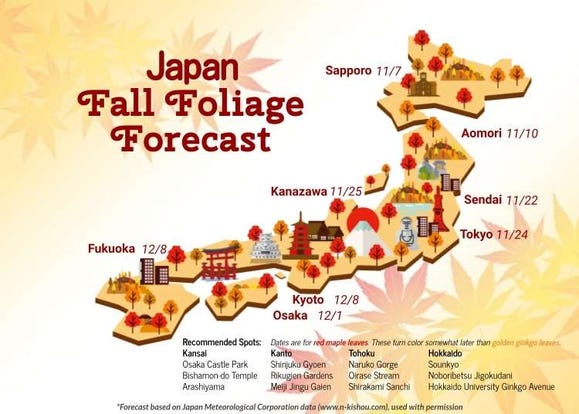
Autumn in Japan 2024: Fall Foliage Forecast & Where to Enjoy the Colorful Leaves (+Tour Info)
- #best ramen tokyo
- #what to buy in ameyoko
- #what to bring to japan
- #new years in tokyo
- #best izakaya shinjuku
- #things to do tokyo
- #japanese nail trends
- #what to do in odaiba
- #onsen tattoo friendly tokyo
- #daiso
- #best sushi ginza
- #japanese convenience store snacks
- #best yakiniku shibuya
- #japanese fashion culture
- #best japanese soft drinks















